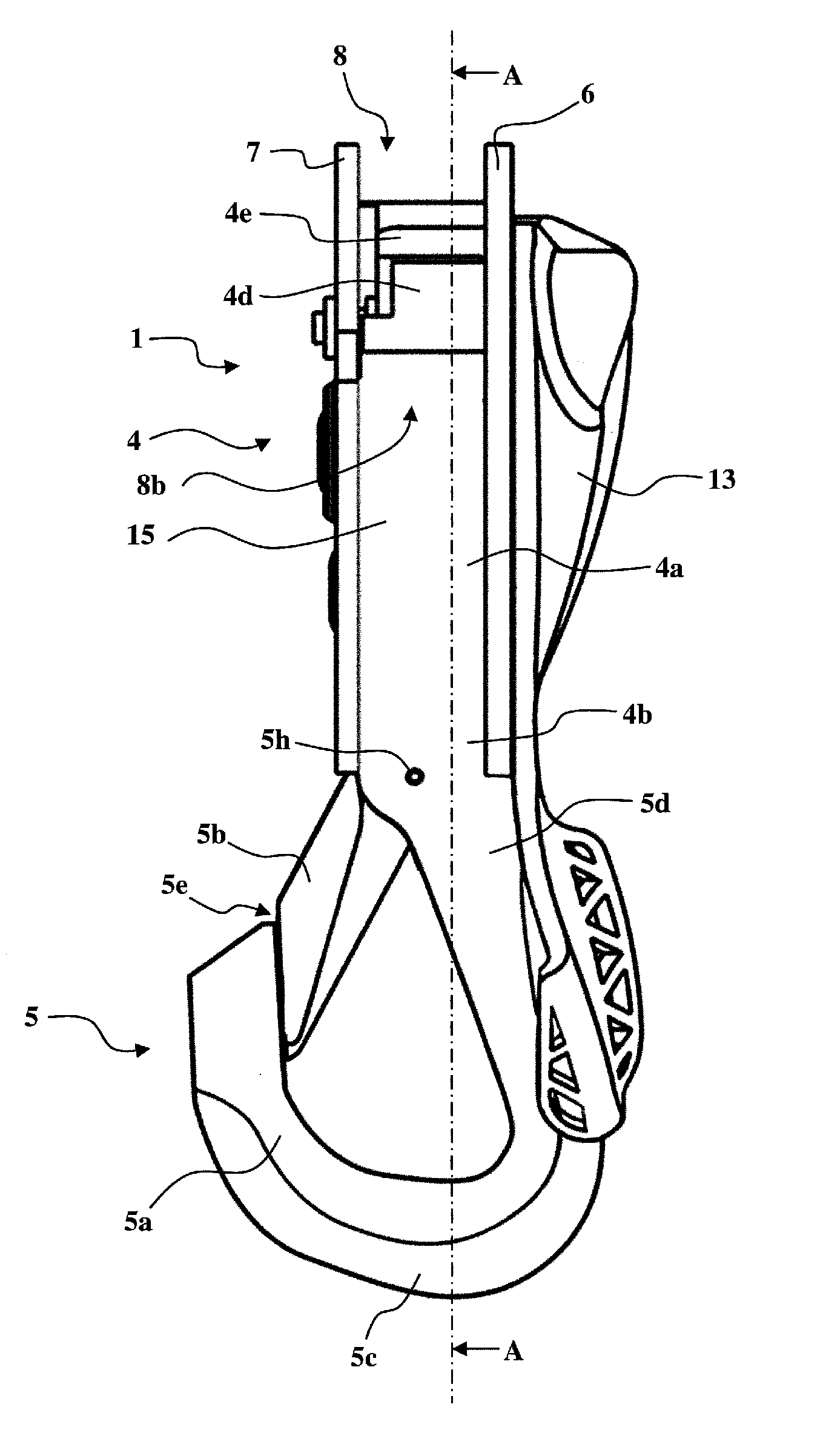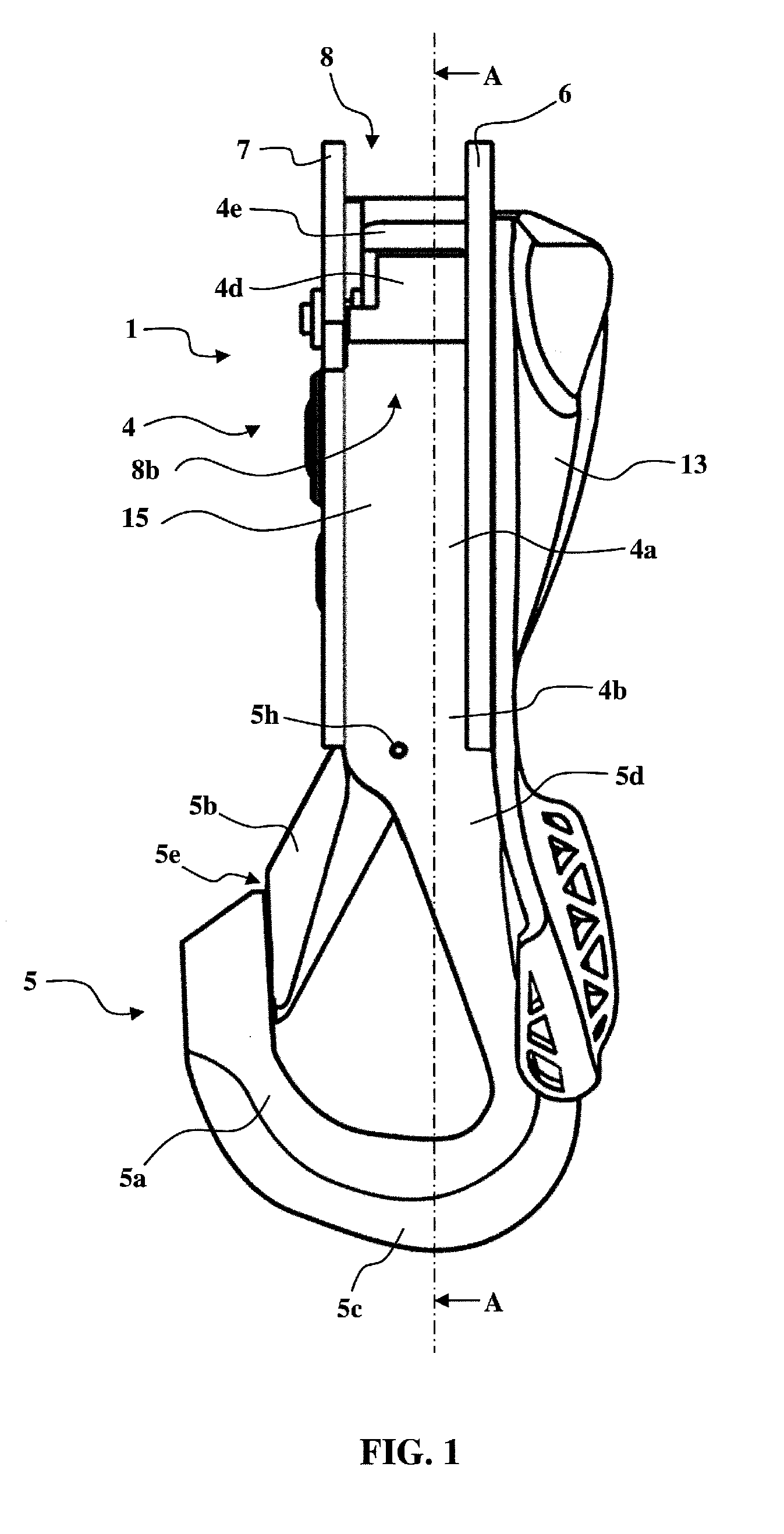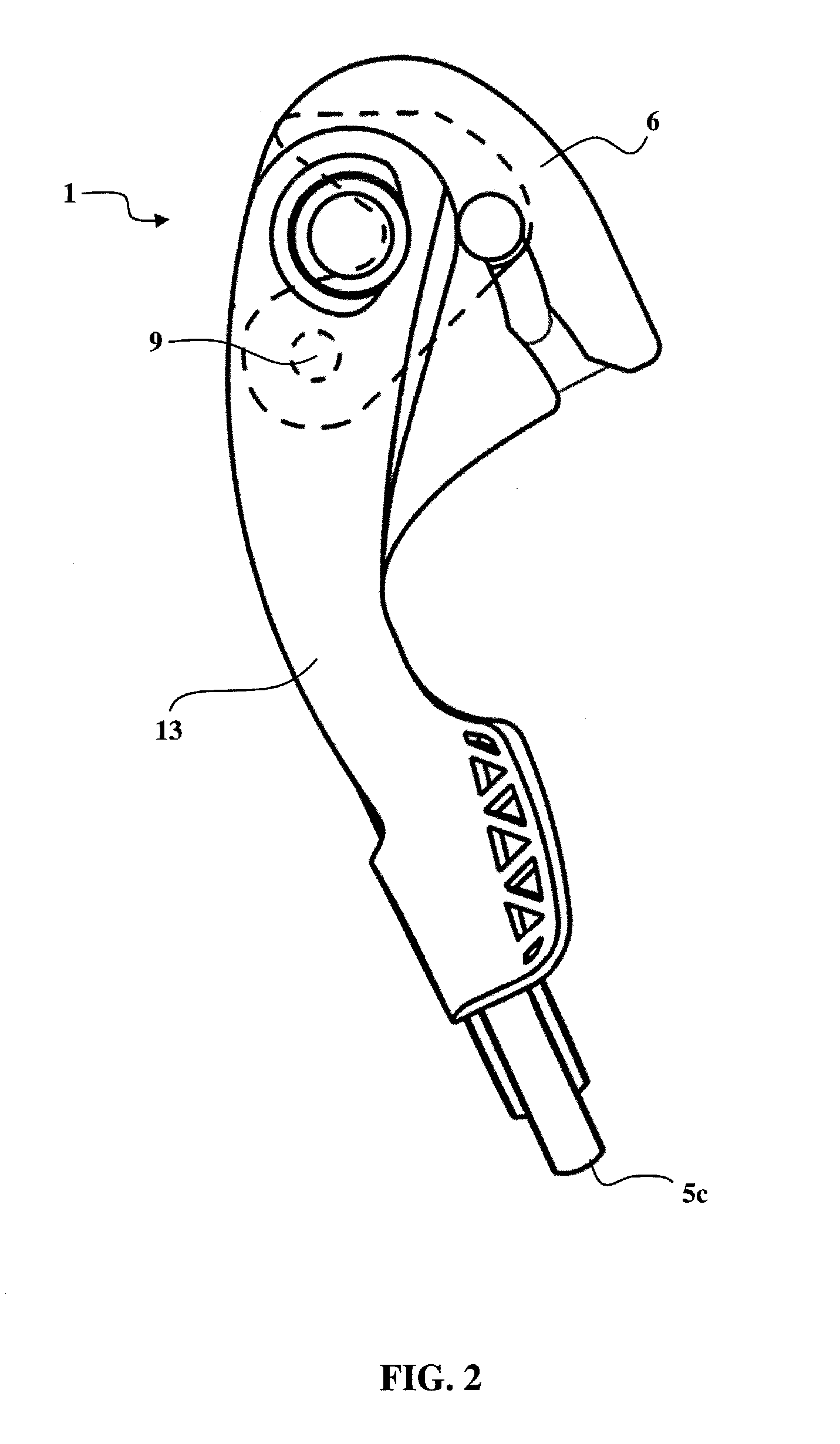Self-blocking descender-belay device
a descender and self-blocking technology, which is applied in the field of self-blocking descender-belay devices, can solve the problems of inability to fulfill the self-blocking function, inability to deliberately reduce the braking of users, and inability to stop the movement of descent, so as to achieve the effect of great ease of cam spacing and great ease of cam displacemen
- Summary
- Abstract
- Description
- Claims
- Application Information
AI Technical Summary
Benefits of technology
Problems solved by technology
Method used
Image
Examples
Embodiment Construction
[0058]In the embodiment illustrated in FIGS. 1 to 12, the self-blocking descender-belay device 1 according to the invention permits control of the paying-out of a rope 3 (FIGS. 5 to 7) in a paying-out direction which is illustrated by the arrow F. Thus, the rope 3 comprises an input end 3A, an output end 3B, and an intermediate section 3C which passes through the self-blocking descender-belay device 1.
[0059]In general, the self-blocking descender-belay device 1 comprises a connection device 4 and coupling means 5.
[0060]The connection device 4 is formed so as to ensure a connection with a rope 3, whilst controlling the sliding or blocking of the rope 3 in the connection device 4.
[0061]The coupling means 5 are formed so as to permit the selective coupling of the descender-belay device 1 either to a fixed point, or to the harness of a user.
[0062]The connection device 4 comprises a connection body 4a with a proximal end 4b which is connected to the coupling means 5.
[0063]The connection ...
PUM
 Login to View More
Login to View More Abstract
Description
Claims
Application Information
 Login to View More
Login to View More - R&D
- Intellectual Property
- Life Sciences
- Materials
- Tech Scout
- Unparalleled Data Quality
- Higher Quality Content
- 60% Fewer Hallucinations
Browse by: Latest US Patents, China's latest patents, Technical Efficacy Thesaurus, Application Domain, Technology Topic, Popular Technical Reports.
© 2025 PatSnap. All rights reserved.Legal|Privacy policy|Modern Slavery Act Transparency Statement|Sitemap|About US| Contact US: help@patsnap.com



